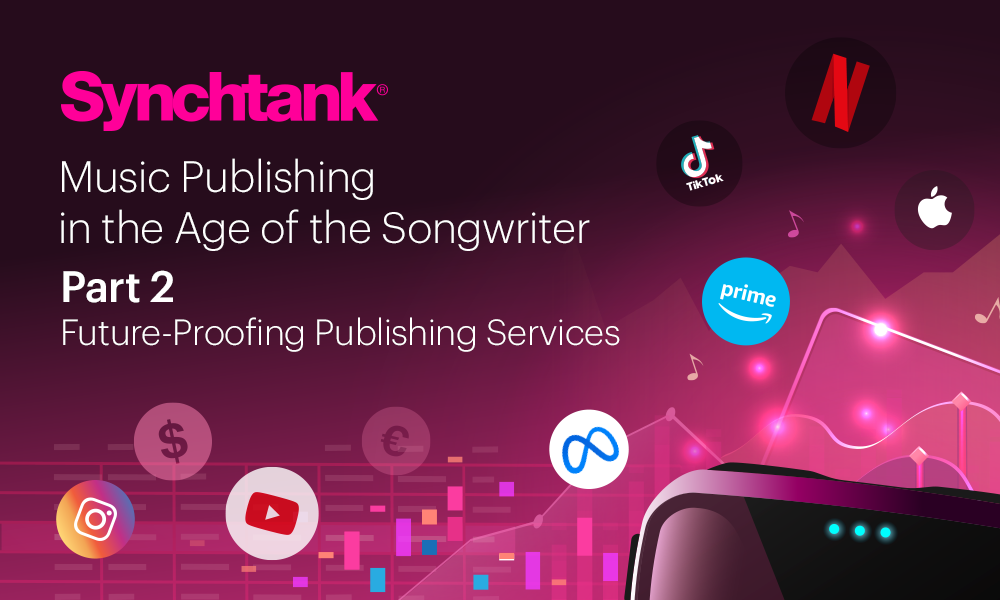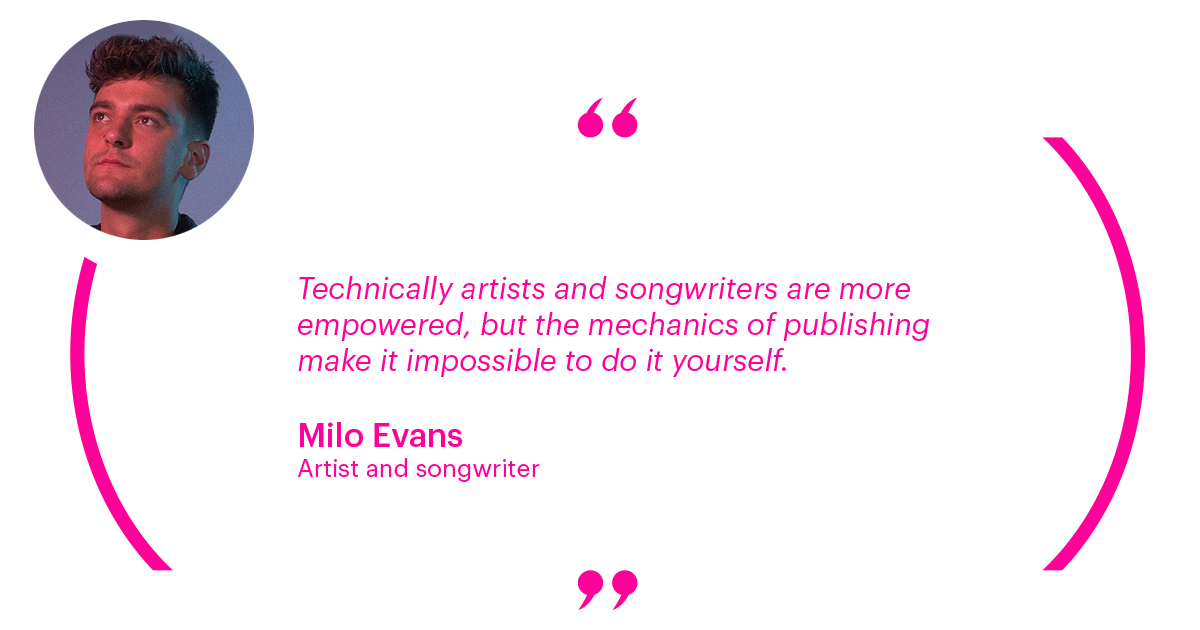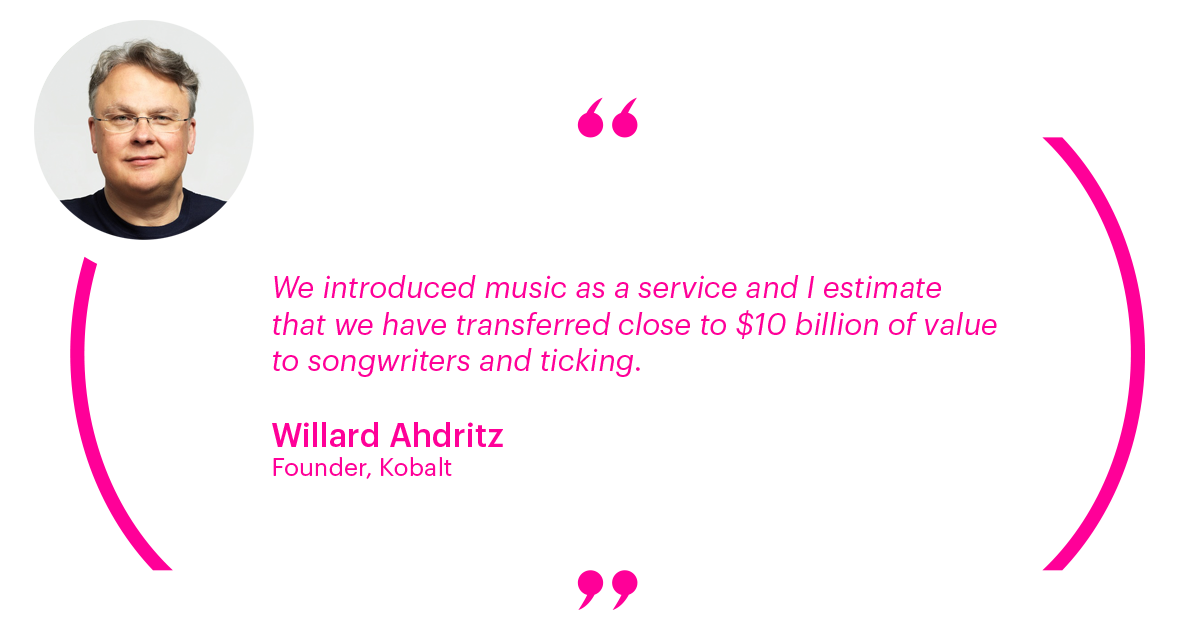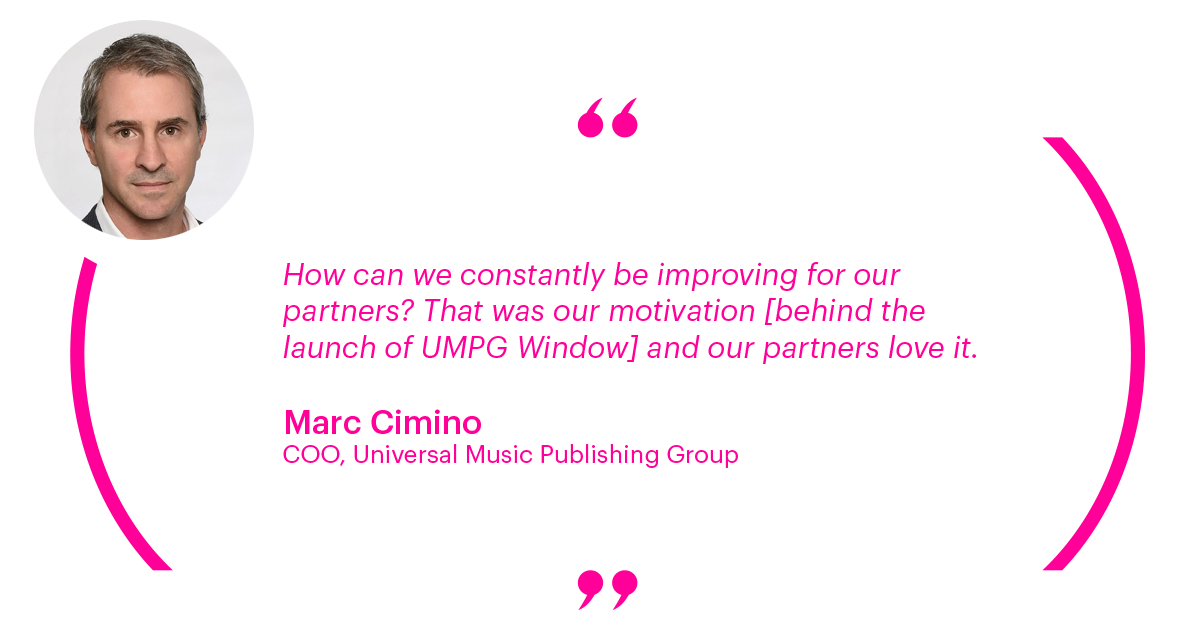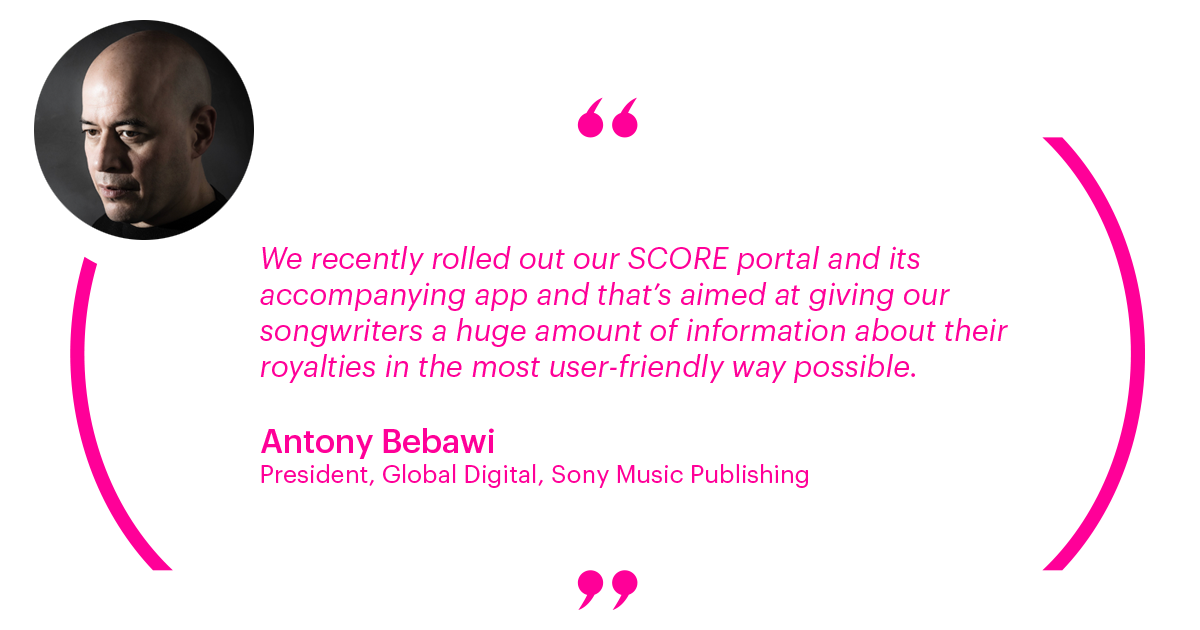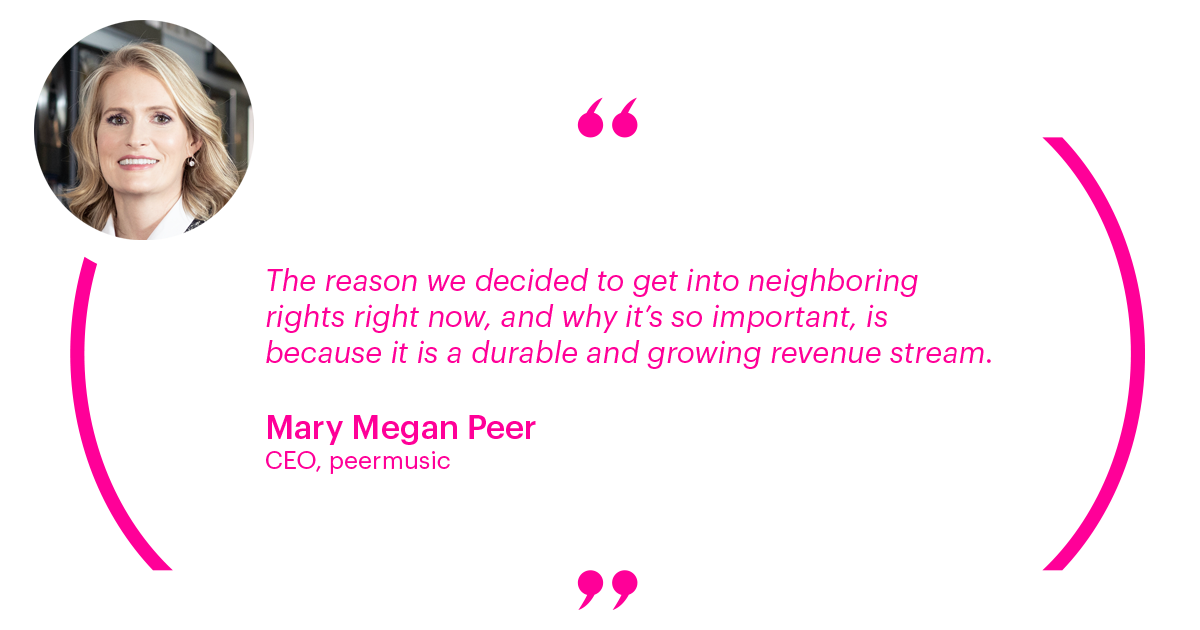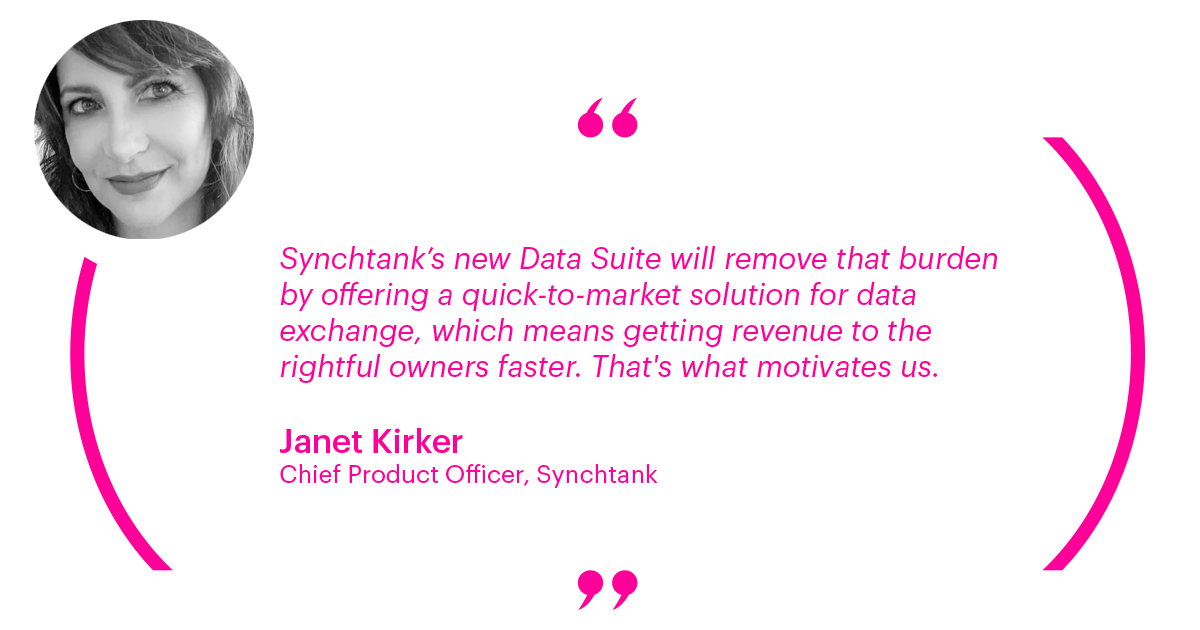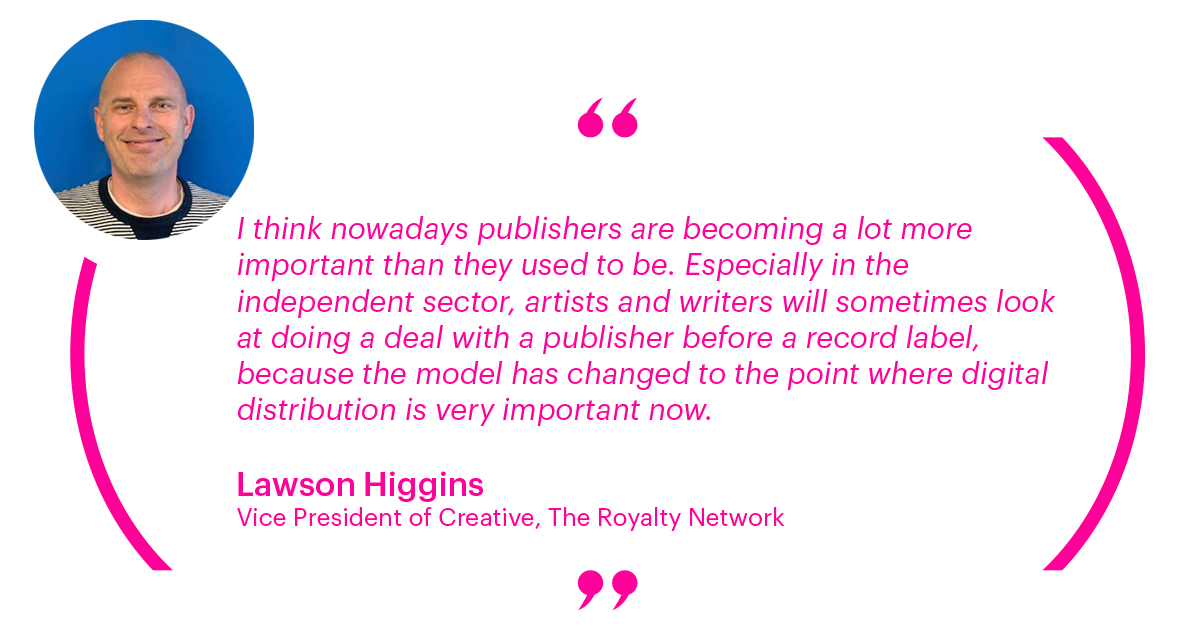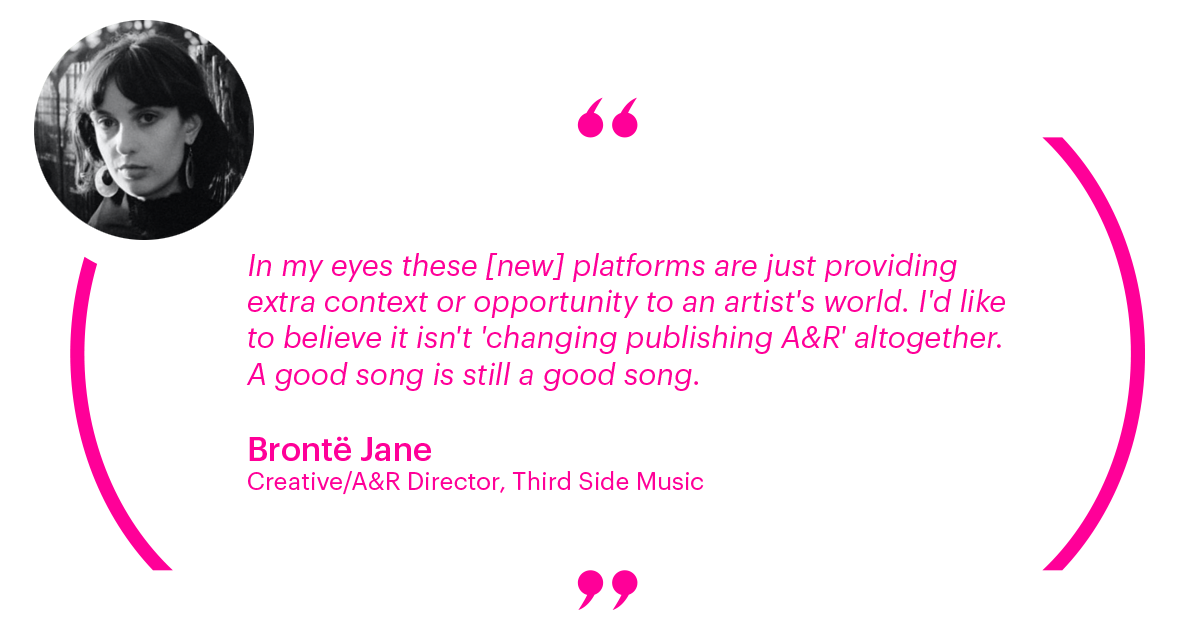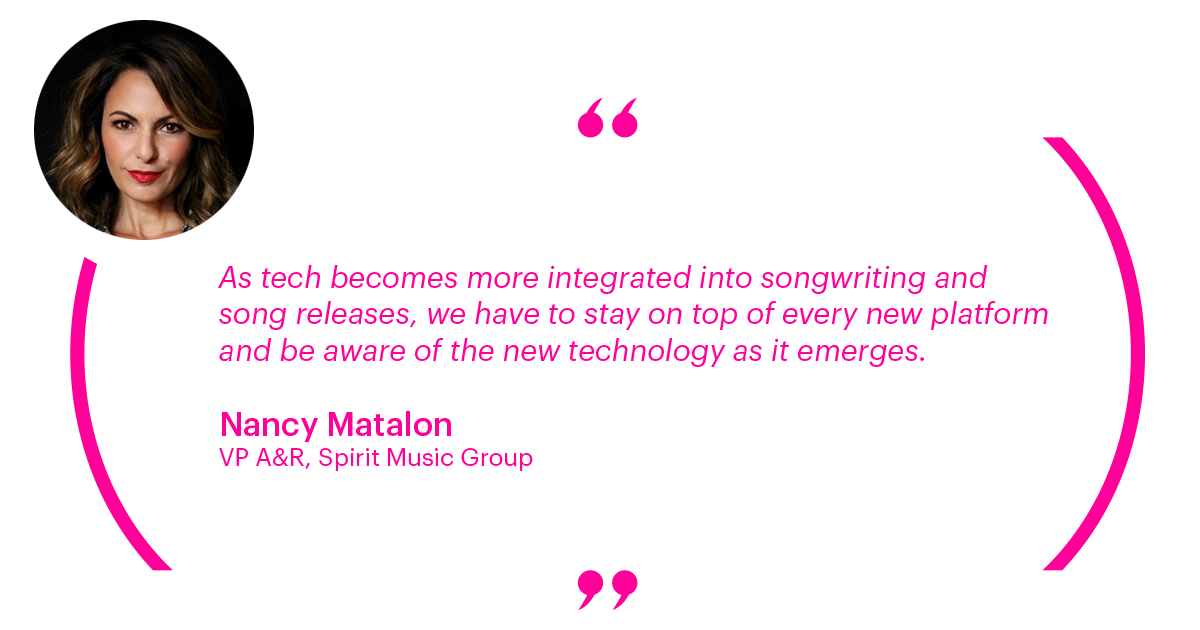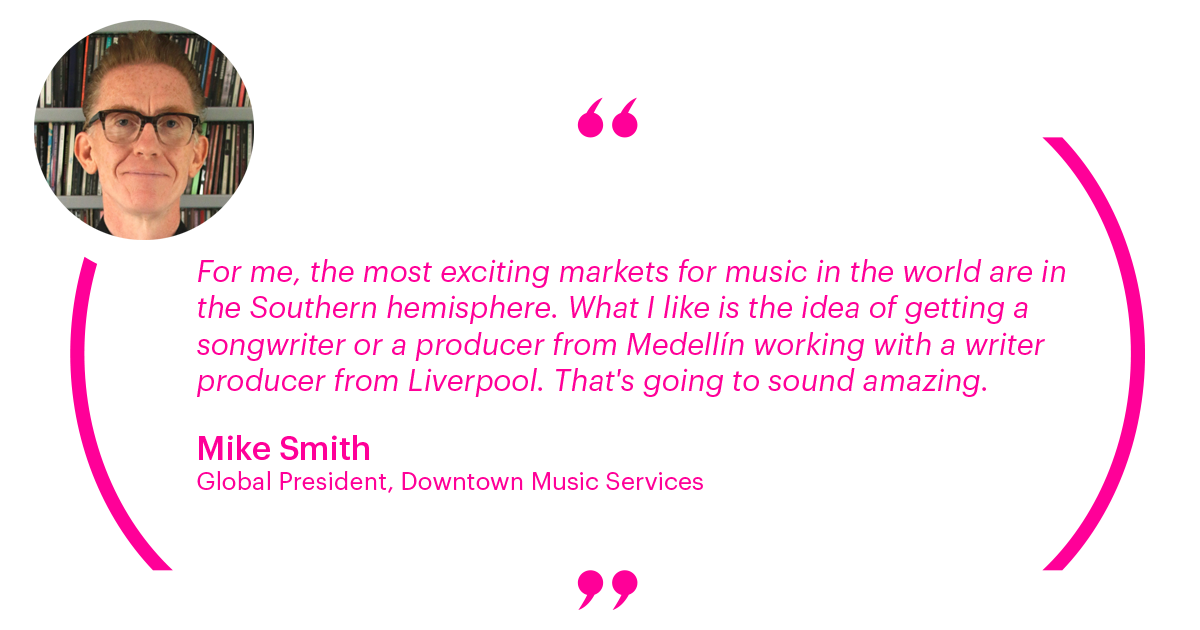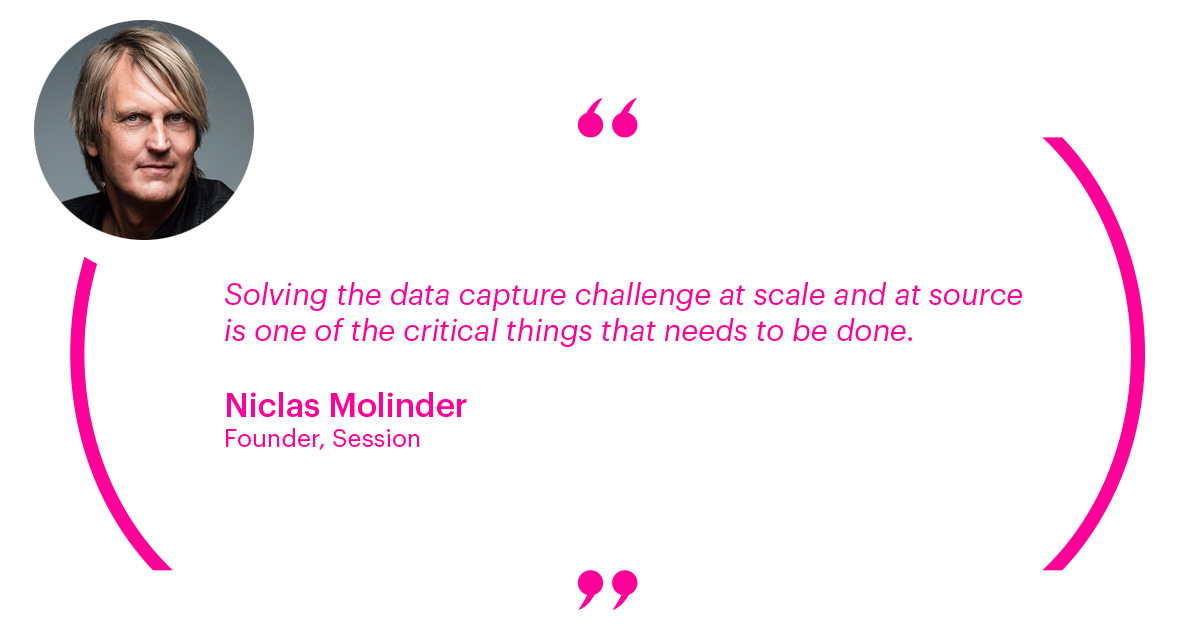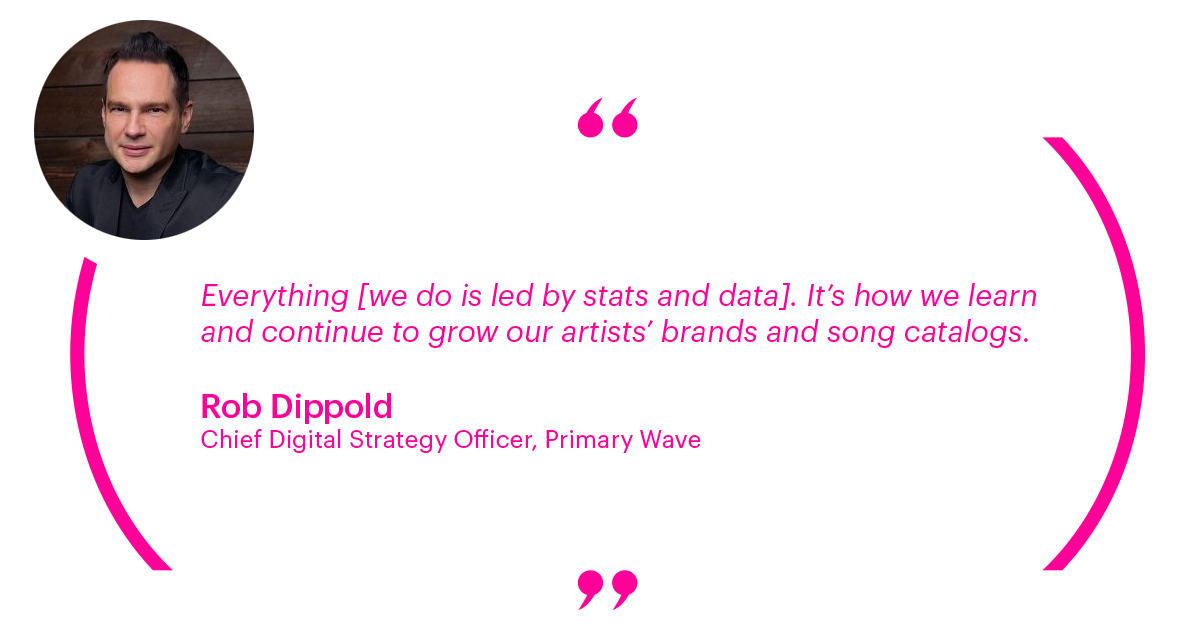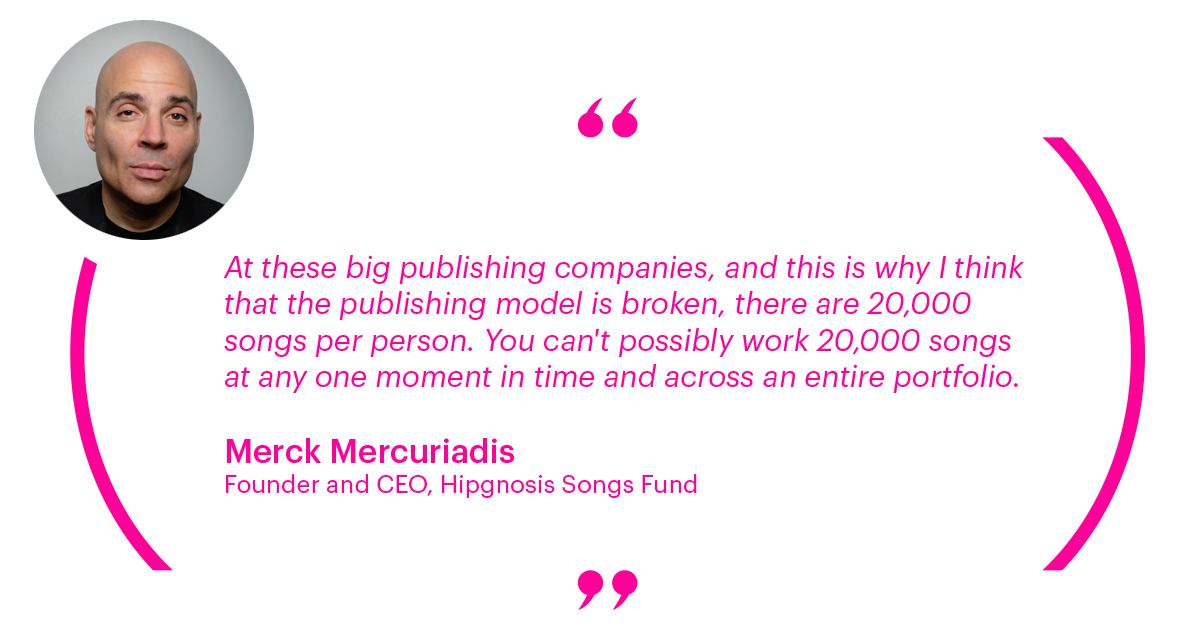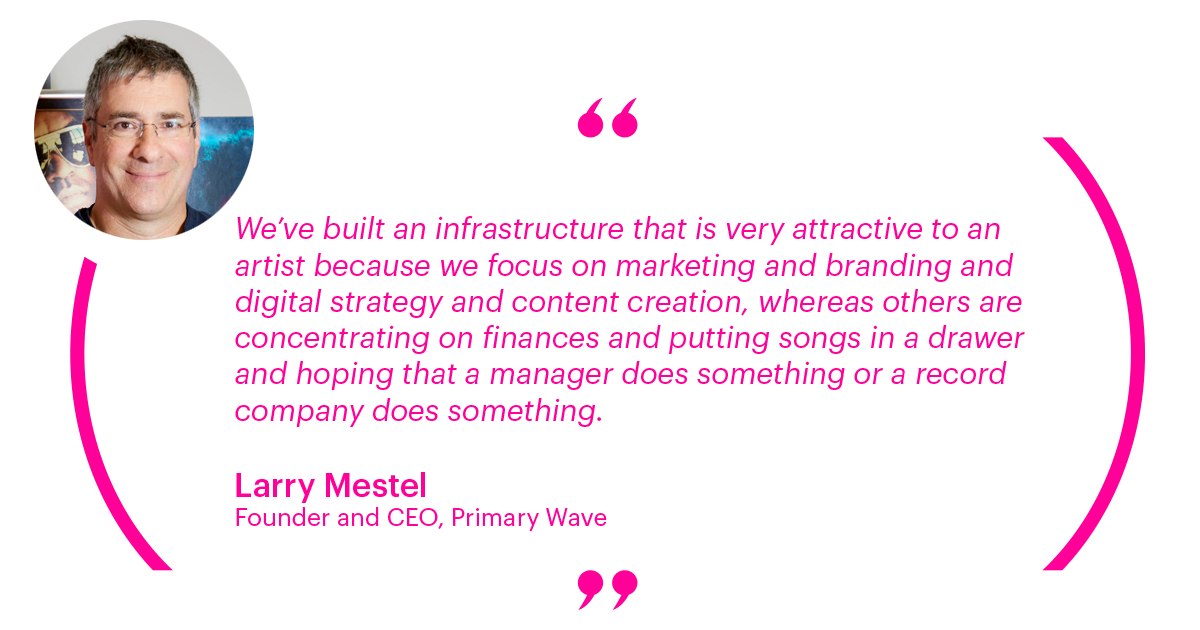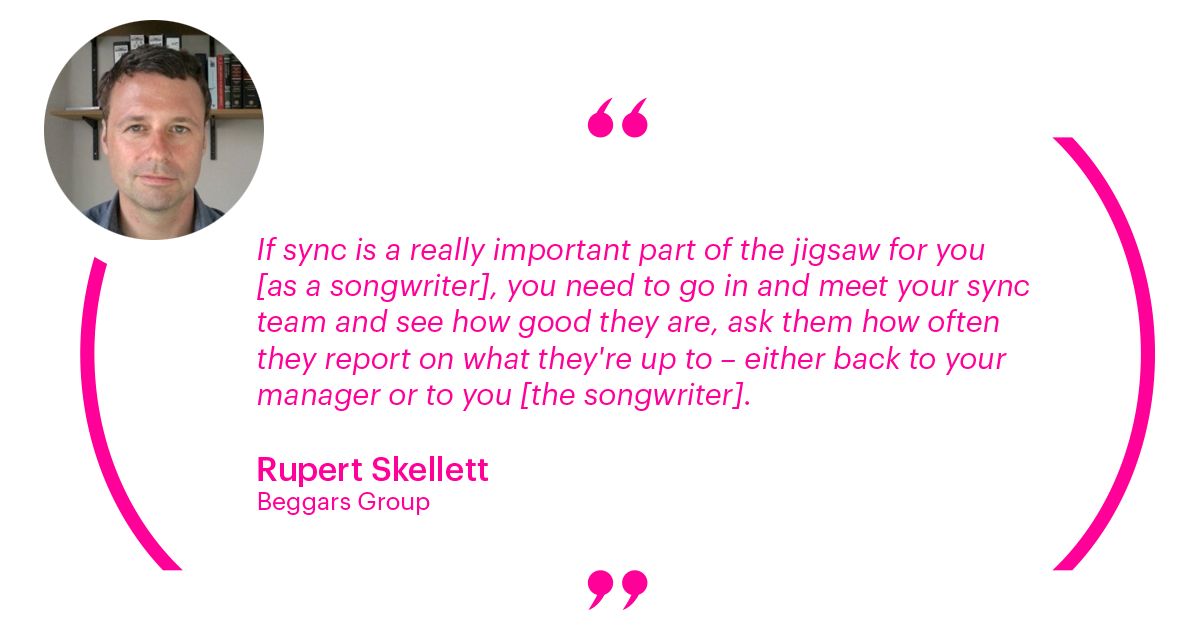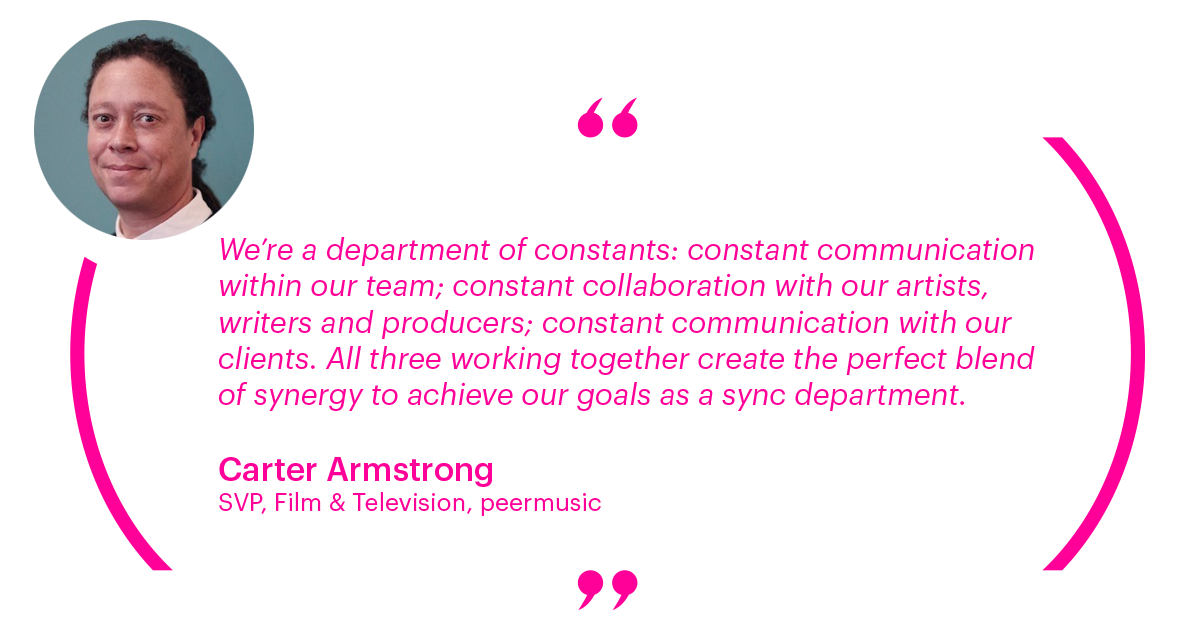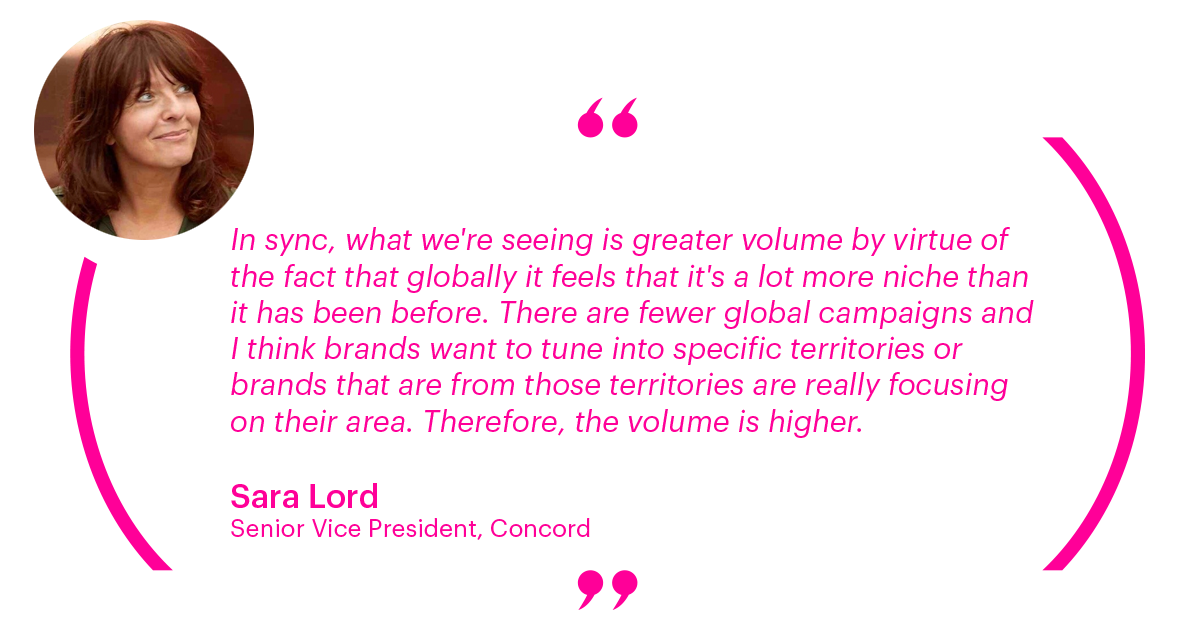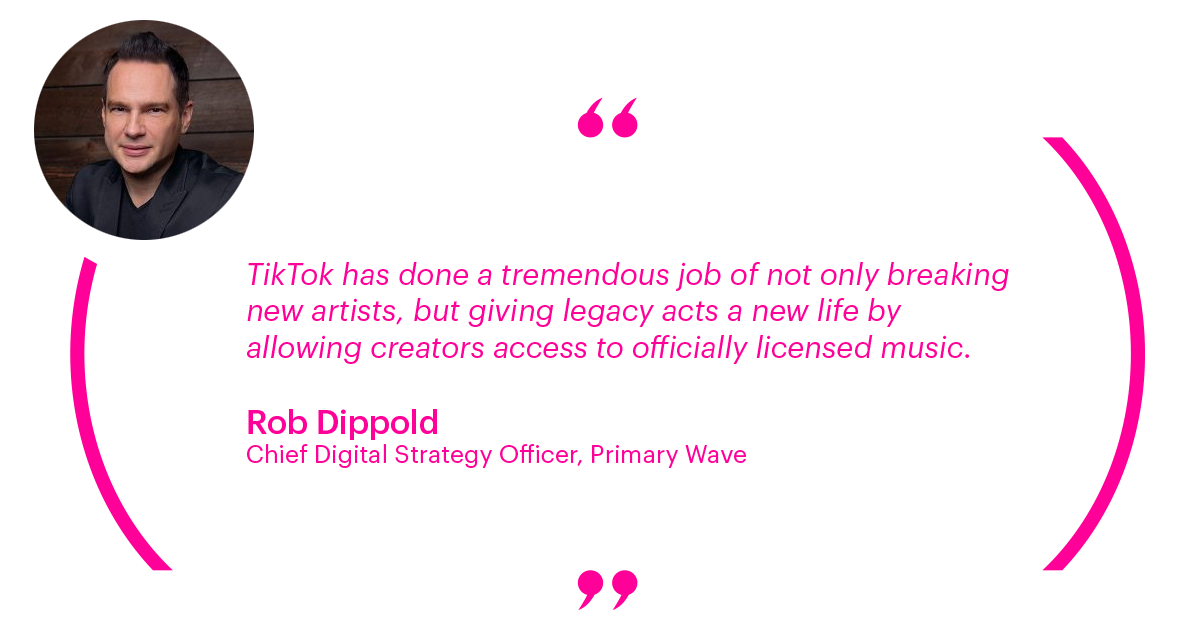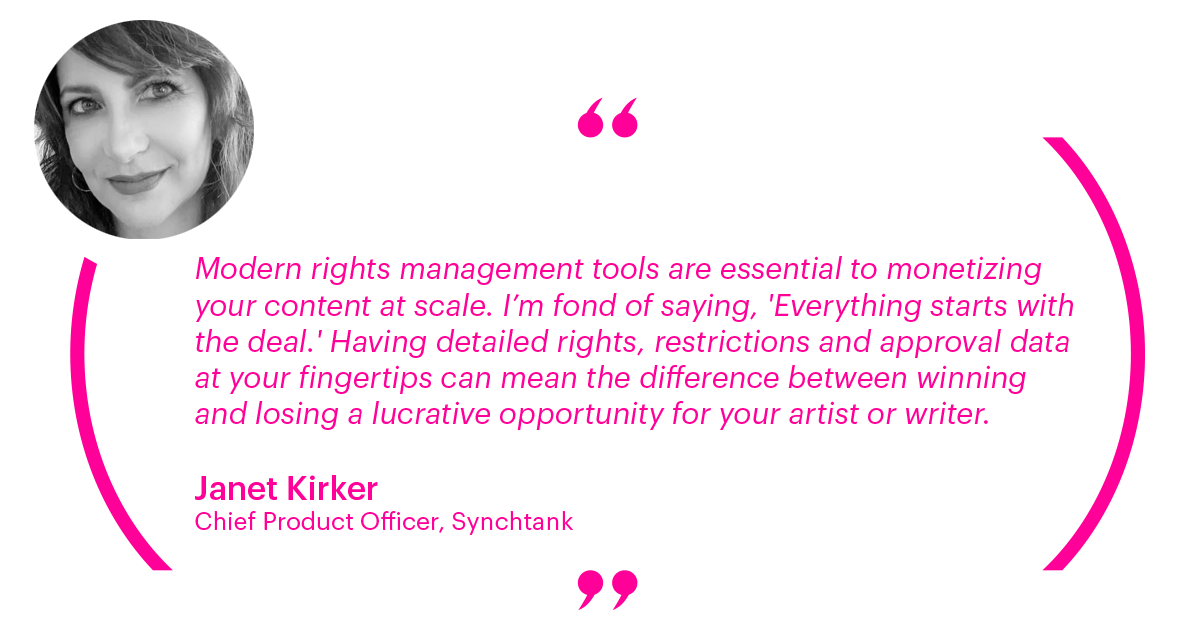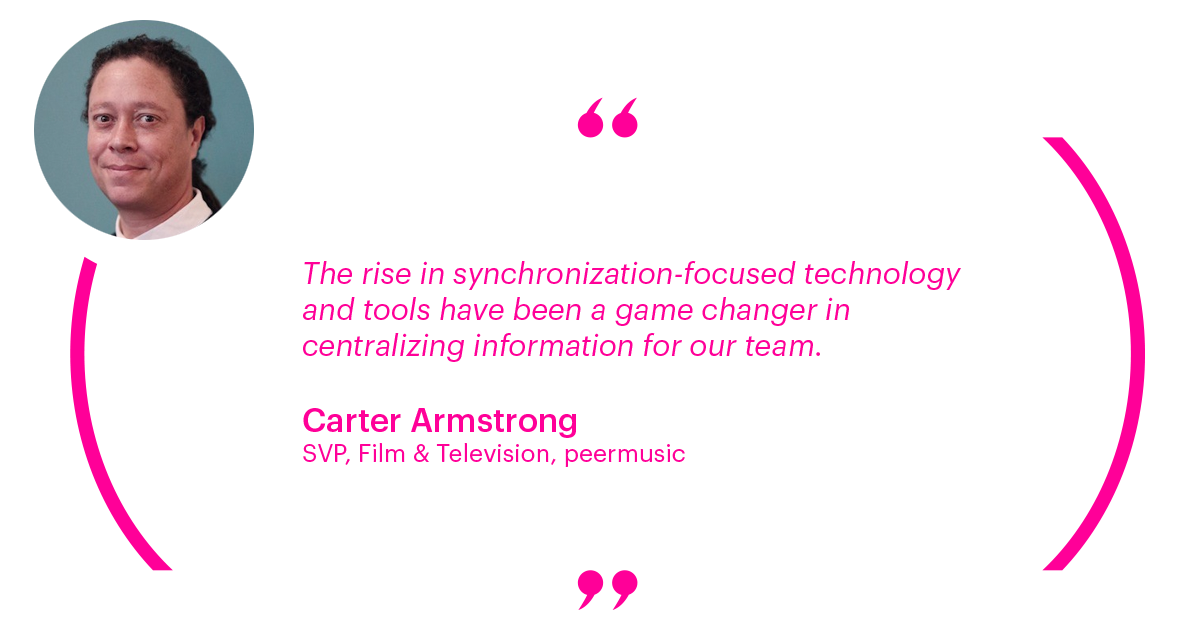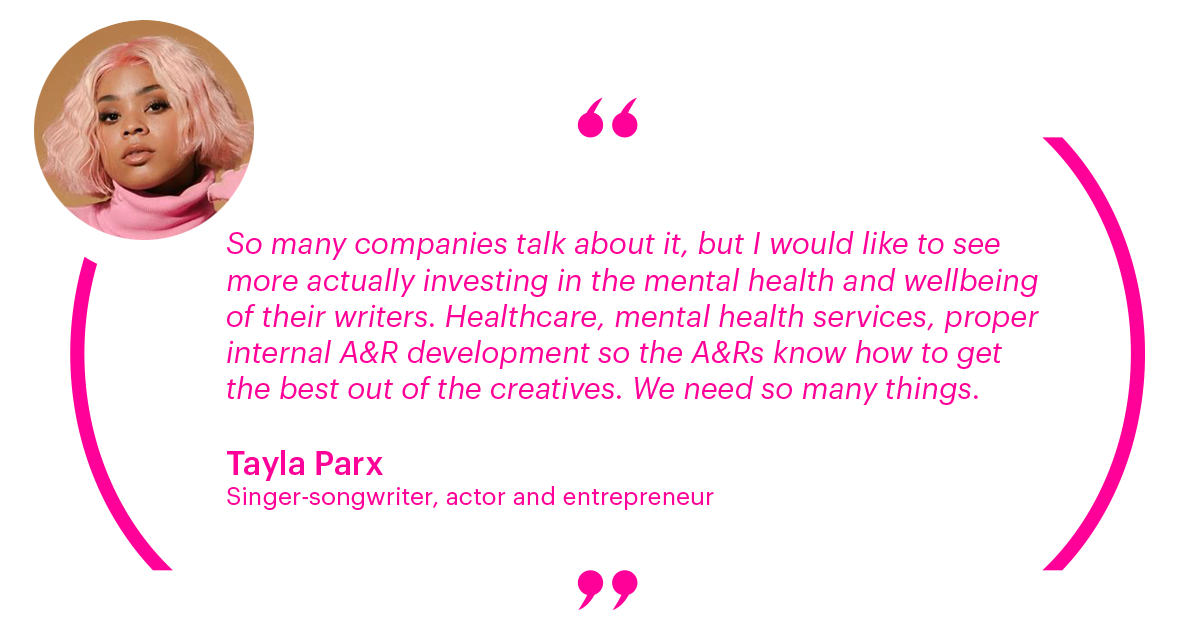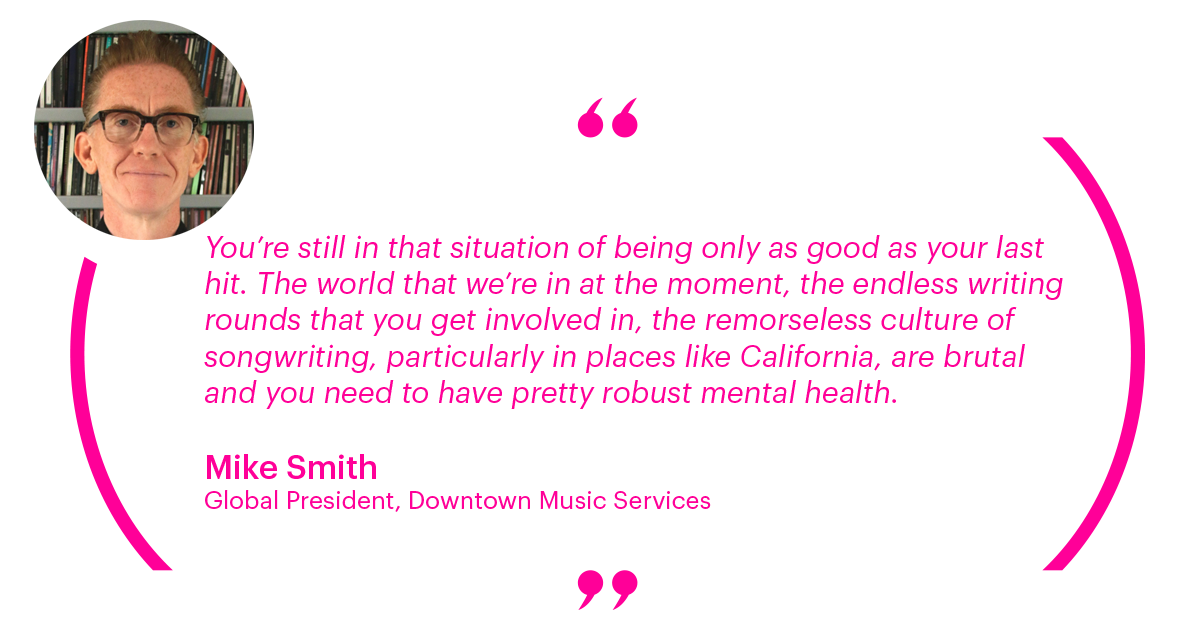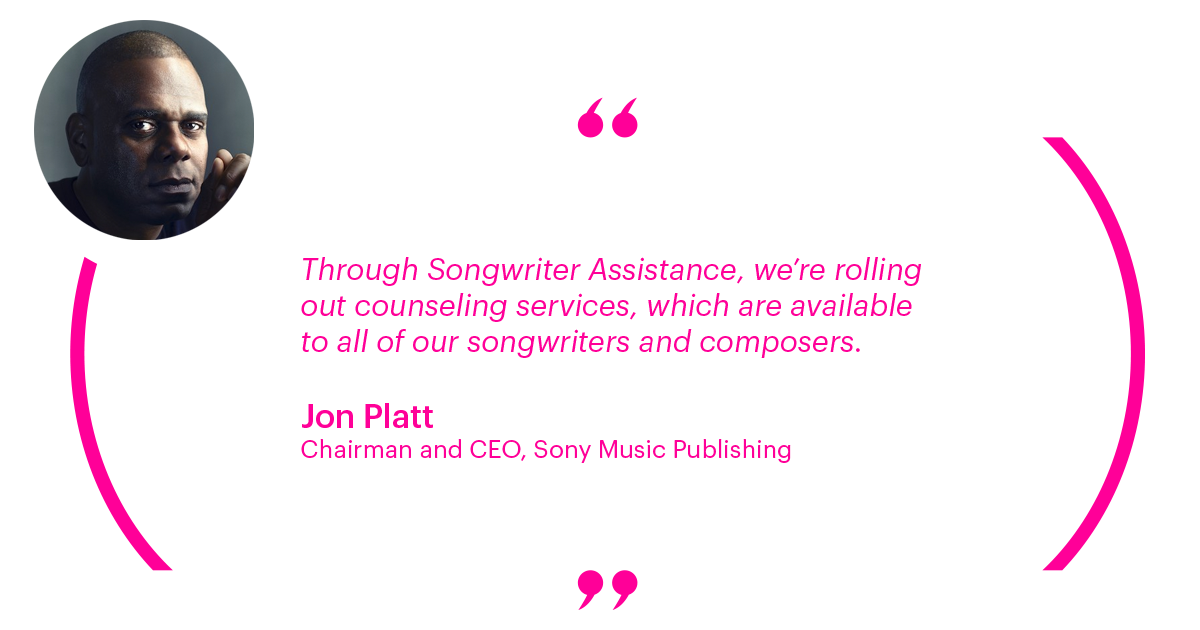Introducing Music Publishing in the Age of the Songwriter, a new report from Synchtank.
Following on from our 2021 publication Drowning in Data, the report examines the fundamental shifts in the music industry in recent years and what they mean for the future of publishing, from new deal types and services that promote transparency and equality to creating more value for songwriters in the digital age.
Through interviews with leading executives and songwriters including Björn Ulvaeus, Carianne Marshall, Jon Platt, Mary Megan Peer, Merck Mercuriadis, and Nile Rodgers, the report delivers the most comprehensive analysis of the music publishing industry from the perspective of those leading it and the songwriters it serves.
This is the second instalment of the report, which is being released in the following four parts:
- The Evolution of Music Publishing
- Future-Proofing Publishing Services
- Economics, Transparency and Equality
- Digital Drivers of Growth
Read part one here or continue for part two below…
Part 2 – Future-proofing publishing services
Administration and financial services
On paper, this is perhaps the least “sexy” part of publishing – removed from the artistic and creative roles associated with A&R and music placement/synchronization. Without these parts firing on all cylinders, however, the whole system fails to operate efficiently.
“As much as publishing is a creative business, a successful publishing company must also be strongly focused on the administration aspects, understanding how to register a license, collect and track catalogs is key – and even more so with the diversification in revenues from the new digital players,” says Mary Megan Peer, CEO of peermusic.
Effective rights management, registration, collection and administration remains fundamental for music publishers. As data lines in the billions become normalized across a head-spinning number of established and emerging platforms, it will only become more Sisyphean to stay on top of things here.
Synchtank’s Drowning In Data report in 2021 laid bare just how complex and involved this new world is for all players. It explained how specialist software and tools – involving huge levels of rolling investment in-house or outsourcing to third-party companies – are critical in keeping the whole system moving.
Music publishers are moving to meet all the new demands that are being placed on them to ensure they are as efficient as possible today as well as tomorrow.
This involves managing rights, tracking trends, spotting new opportunities in a fast-moving market and staying on top of the booming volume of data stemming from a multiplying number of micropayments.
Mike Smith, Global President at Downtown Music Services, says that his company made a conscious decision in early 2021 to step back from copyright ownership and to, as a means of differentiating itself in a crowded business, refocus what it did and “radically rethink the way that we did deals whilst maintaining the same creative support and the same level of client service”.
The company sold its owned assets to Concord, making Downtown a publishing administration business.
“We made the decision that, going forward, we would only do administration deals,” he says. “We would be looking to focus on short-term deals with good splits for the writer. With most administration deals when you’re at a major label, you do those short-term deals and there’s good splits for the writer, but you don’t get a great service.”
The company merged Downtown Music Publishing with artist services company DashGo to create Downtown Music Services.
“As well as being a music publisher, we’re very much in the record business,” he explains. “I think that’s a very attractive offering to aspiring songwriters, especially if those writers are singer-songwriters, if they’re artists in any way, or if they’re working on artist projects, because they’ve got a direct route into being able to release music. Whilst other companies are joined up to some extent, nobody is as close as we are.”
Songtrust, an affiliate company of Downtown Music Services, handles the administration side of its business. “We’re a much smaller company, but we have a large synchronization team, we have a large A&R team and we have a global footprint,” he says. “You’ve got a high-quality team working a much smaller number of rights; so that means you’re going to get a lot more attention and you’re not going to get lost in the way that you do get lost in those bigger major companies.”
Shauni Caballero, founder of music rights management and publishing company The Go 2 Agency, argues that this is the way the sector is moving, responding to new demands and expectations from new generations of songwriters.
“Admin deals, which I am known for, are becoming more and more common,” she says. “Clients have come to us with major label deals only wanting administration deals.”
Ditto Music Publishing is also symbolic of the changing nature of organizations in this space, coming from a different part of the business (distribution) to add publishing administration to its suite of services.
“Ditto Music Publishing is a publishing administration service available to Ditto distribution clients globally,” says Tom Weller, Managing Director of Ditto Music Publishing & Ditto Plus. “Ditto is the only distributor with a publishing service that allows the primary user to invite their co-writers to sign up as well, which we offer for free.”
In theory, songwriters can seize greater autonomy here and run their own publishing. Milo Evans, an emerging songwriter and artist, suggests this might appear financially advantageous, but the layers of administration involved, and the expertise needed, would make it overwhelming, especially for people who are new to the industry.
“I think it’s possible for an artist to manage their own publishing – I just think it could be dangerous and you potentially wouldn’t have as many opportunities, so smaller artists would rarely opt for it,” he says. “I don’t know that receiving 100% of the publishing income is worth the effort it will take to administrate. I would rather focus on writing music and building social presence. The admin side is boring. Technically artists and songwriters are more empowered, but the mechanics of publishing make it impossible to do it yourself.”
John Vella, a songwriter and member of the band Tenderfoot, suggests that the rise of new software and tools means that, eventually, songwriters can circumvent much of the industry machinery and that the companies they work with will be held to account on what, exactly, it is they are bringing to the table.
“We might be witnessing the end of the era of the middleman,” he proposes. “Services that just take margins can be replaced with new technologies.”
Keeping on top of payments that publishers know about is one thing, but equally critical is having systems in place that can spot and help recover “black box” royalties from PROs that might be unattributed and, as such, gathering digital dust. The clock is ticking to claim them before they are aggregated and redistributed to others. Having systems in place that can filter through oceans of data and spot historic registration errors will help uncover significant amounts of income that might otherwise go undetected.
As technology moves on and as new software and systems come into play – offering to refine existing solutions or provide whole new solutions – the need for interoperability between them all grows exponentially. Having technology systems in place that can integrate with other smart systems and third-party data sources/databases to exchange data and ensure accuracy is paramount in this high-speed and mass-data age.
On a macro level, there are significant structural changes that have seen the arrival of licensing behemoths like ICE (a joint venture between PRS, STIM and GEMA that was set up to “support songwriters, enabling societies and publishers to accurately compensate them when their work is used internationally”) and IMPEL (designed to collectively support and represent independent music publishers with a market share below 5%). Such aggregation of power and resources is designed to get better deals and make licensing and monetization simpler, more efficient and more effective.
Pioneered by the arrival of Kobalt Music Group in 2000, there has been a growing movement to have publishers provide songwriters with deeper and swifter access to performance and financial data in order to empower them to make more informed and strategic decisions.
“We created this movement where songwriters can demand transparency and data,” explains Willard Ahdritz, Founder and Chairman of Kobalt Music. “We changed the fundamentals of the business. Before Kobalt came in, you could only get an admin deal – i.e. we collect the money for you. You could not get the full creative service, full sync service, because then you needed to take a publishing deal. You gave away 100% of your rights, mainly in Europe, and with co-publishing, mainly in the US, you gave away 50% of your rights to get hold of those creative services which are so important for songwriters.”
He adds, “We introduced music as a service and I estimate that we have transferred close to $10 billion of value to songwriters and ticking.”
Kobalt ushered in the era of the royalty portal – a tool for songwriters to get (increasingly real-time) data on where their music is being used and how much it is earning.
Other indies, notably BMG with myBMG and peermusic with IRIS, were keen to slipstream this and respond to a changing culture in which transparency was something that had to be delivered on.
“I think we’ve always put a premium on paying our writers in an efficient and transparent manner,” says Mary Megan Peer, CEO of peermusic. “The fact that we do operate directly in 31 countries, which includes all the major markets and a lot of the minor music markets in the world, that means that our songwriters benefit from collections by peermusic worldwide and they’re not subject to the length of time it can take if a company is represented by sub-publishers around the world.”
She continues, “Sub-publishers have to pay the writer’s publisher and then, a period later, the writer gets paid. We bypass that process. We really focus on individual relationships. We generally give writers advances when they ask. We have flexible payment options when necessary since we really focus on customizing ourselves to the writer’s needs.”
All of the majors have something similar now – from UMPG Window (describing itself as “the leading royalty portal for songwriters”) to Sony Score (to “bring state-of-the-art service, insight and transparency to its songwriters, composers and film and television studio clients”) and Warner Chappell with its Music Client Portal (“designed to benefit all of our songwriters and partners, enabling you to access your data easily on the go”).
“How can we constantly be improving for our partners? That was our motivation [behind the launch of UMPG Window] and our partners love it,” says Marc Cimino, Chief Operating Officer at Universal Music Publishing Group. ”The ability to pull up your statement on your phone and see what your earnings currently are in specific territories is incredible data. And then, to boot, if you have a payable balance, to be able to request money and get it very quickly without any downside is customer service at its best.”
Publishers have greater access to data than any individual songwriter will have, so part of offering a robust service to them is to provide in-depth stats and information so they can better understand their catalog across an explosion of distribution channels.
There is a risk of mere lip service being paid to “data” and “transparency” today, but just repeating these words is not enough. That data (and that transparency) has to be presented to songwriters in an easily digestible and comprehensible way so that they can understand how their music is being consumed, where it is being consumed, what things are trending and (crucially) what their publisher is doing for them to prepare for this and enabling them to exploit it.
Technology is the key to having more transparency across music publishing. As such, publishers are having to modernize their financial services so as to be able to offer real-time payments, cash-out services, loans against future earnings and more. The pandemic made it clear just how precarious the earnings of songwriters can be. Having systems in place to make their lives and careers more stable should no longer be the exception; they should be the rule.
“We recently rolled out our SCORE portal and its accompanying app and that’s aimed at giving our songwriters a huge amount of information about their royalties in the most user-friendly way possible,” explains Antony Bebawi of how Sony Music Publishing has moved here. “It gives people the ability to dig into details, but also get a high-level view. There will always be more work to be done because the industry is always changing – so we’re always keeping these things under review.”
Jon Platt, Chairman and CEO of Sony Music Publishing, expands on the reasoning behind this move by the major. “We want to get money into songwriters’ and composers’ hands as quickly as possible,” he says. “Our Cash Out service is just one of the ways that we’ve been able to achieve the objective of getting our songwriters paid faster.”
Publishers, of course, will need to have the technical and financial engineering capabilities to provide this (as covered in detail in the Drowning In Data report).
The ability for publishers to analyze past earnings and, from that, to make robust future projections also plays a critical role in calculating advances as well as performing the proper due diligence for prospective catalog acquisitions/writer signings.
Given the scale of acquisition deals happening in recent years, publishers also need to be able to deal with letters of direction when rights are sold to ensure that payments are not caught up in red tape or held back from writers.
Publishers also need to be aware of how future payments and whole new revenue models will affect them and their ability to properly collect and distribute due monies.
While there is still great deal of uncertainty about how things like NFTs, cryptocurrency and Web3 will affect the publishing world in the longer term, the fact of the matter is that deals are happening here and, as such, they need systems and procedures in place that can track revenues and have them flow back to where they should go.
Neighboring rights
In recent years, neighboring rights has been an area of growing interest for publishing companies, investing heavily here in order to ride the wave.
In October 2020, peermusic, acquired Premier Muzik, All Right Music and Global Master Rights as part of a major move into neighboring rights, setting up the specialist peermusic Neighboring Rights arm, representing over 300 record labels and over 2,500 performers.
“The reason we decided to get into neighboring rights right now, and why it’s so important, is because it is a durable and growing revenue stream,” Mary Megan Peer, CEO of peermusic, told Synchtank last year. “The growth in neighboring rights is what is most exciting to us. This is being driven on many fronts: the neighboring rights collection societies are professionalizing and becoming more efficient at collecting and distributing income; and there are legislative changes in several countries which will increase collections.”
There has also been a significant move by Round Hill to also get into neighboring rights, setting up its Sound Hill arm in early 2021 to handle this.
“Round Hill has been collecting its own label share of neighboring rights for many years and the launch of Sound Hill acknowledges that this is an area where our company can provide real value to artists and others who need a highly efficient collection service alongside royalty financing,” Robert Brenner, Manager of Royalty Services and Label Operations at Round Hill, told Music Business Worldwide at the time.
BMG established a neighboring rights service in May 2020 (to “enable recording artists to capitalize on one of the music industry’s least understood revenue streams”) and Downtown set up Downtown Neighboring Rights the following month.
While this is relatively new ground for independent publishers, the majors have been scaling up to deal with neighboring rights for several years. Leading the pack is Sony Music Publishing, which established its own neighboring rights division in May 2014 and then moved in early 2021 to buy Kobalt Neighboring Rights (with the acquisition clearing the regulators in March 2022).
The flurry of activity here in recent years is proof positive that this is a hugely important growth area for the music industry as a whole and the US in particular (as it has not maximized this income stream as quickly as several European markets have).
Again, having the proper technology and data in place to effectively handle a (relatively) new income stream is central for any player to be able to offer a solid, dependable and attractive service here.
This is something being addressed directly by Synchtank’s new Data Suite, as Janet Kirker, the company’s Chief Product Officer, explains, outlining where new technologies can streamline what were previously protracted and onerous procedures for publishers.
“Some of us remember life before CWR [Common Works Registration], when every PRO had its own data file format making works registration excruciating,” she says. “Neighboring rights societies are going through similar standardization with the move to DDEX’s RDR message suite and the RDx hub, but adoption takes time and effort and the labels and publishers are already stretched. Synchtank’s new Data Suite will remove that burden by offering a quick-to-market solution for data exchange, which means getting revenue to the rightful owners faster. That’s what motivates us.”
A&R and creative services
The headlines might be about long-established songwriter and hits catalogs going for staggering sums of money, but publishing has to be as much about the future as it is about the past.
Catalogs can be exploited in a growing number of ways and, since the first major impact of digital two decades ago, can be constantly worked in a way that was impossible before; but publishers need to be investing now in the potentially fecund catalogs of tomorrow by nurturing new songwriters and helping progress their careers.
That development and nurturing of new songwriters has never been so critical. In fact, several publishers we spoke to explained that due to the increasing number of artists (who are also songwriters) choosing distribution-only deals, creative publishing services are increasingly important in today’s industry.
“I think nowadays publishers are becoming a lot more important than they used to be,” says Lawson Higgins, Vice President of Creative at The Royalty Network. “Especially in the independent sector, artists and writers will sometimes look at doing a deal with a publisher before a record label, because the model has changed to the point where digital distribution is very important now.”
He adds, “I think the shift has created a huge leap of faith for people to go, ‘Oh, you know what, let’s go with a publisher.’ They’ll be just as creative at the beginning. And they can also assist with labels.”Jurassic World Dominion
The A&R/creative side of publishing is heavily based around relationships and building broad networks. There is much romantic talk about “golden ears” and “gut instinct” here – and there is a lot to that as music has to move us on a human and emotional level and so involves a lot of instinct.
However, data can be increasingly used to help guide some of these “gut instinct” feelings in terms of which writers to sign and, once they have been signed, to help publishing teams make strategic business decisions, open up new opportunities and be able to jump on trends on a global scale like never before. The speed of the business is accelerating and data, when used judiciously and wisely, can help publishers stay properly abreast of things.
Publishers today have more tools, technology, and access to data than ever at their disposal to drive creative and strategic decisions. All the major DSPs send back rich data lines to partners like labels and publishers and there are a huge number of external services – such as Chartmetric, Soundcharts and Viberate – that can assist enormously here.
“I would say that A&R in the music industry has completely shifted since DSPs have come to fruition,” asserts Lawson Higgins of The Royalty Network. “Algorithms and analytics are really high in most major label publishers because you can actually see a rapid change in the growth of a song in literally days or hours. It’s great that you can do that. But, personally speaking, I still like to find new music via all the old channels, like blogs or word of mouth.”
Brontë Jane, Creative/A&R Director at Third Side Music, insists that technology and access to more transparent data are certainly improving things for songwriters, but the fundamentals of the business are still built on the quality and appeal of the art being created.
“In my eyes these [new] platforms are just providing extra context or opportunity to an artist’s world,” she says. “I’d like to believe it isn’t ‘changing publishing A&R’ altogether. A good song is still a good song.”
Larger companies have also invested heavily in their own in-house data systems that can aggregate information from a variety of sources, cross-reference them and add greater precision to decision making.
A&R in 2022 has to factor in new audience behaviors and how streaming and instant access to music is changing consumption patterns. Songs are broken and revived in whole new ways today and modern A&R has to have a holistic view over an ever-expanding universe of distribution and consumption.
“As tech becomes more integrated into songwriting and song releases, we have to stay on top of every new platform and be aware of the new technology as it emerges,” explains Nancy Matalon, VP A&R at Spirit Music Group, on how music companies have to be swift and nimble to properly capitalize on new ways that songs can break or go viral. “That’s become very important, especially with some of my more developing songwriters and artists.”
She adds there are licensing and copyright concerns tied up with new and emerging platforms and that writers need to be as attuned to the potential cons here as they are to the potential pros. “I constantly have to say [to artists], ‘OK, let’s be sure that you haven’t signed up for something that’s going to infringe on your masters or any publishing.’”
Carianne Marshall, Co-Chair and COO at Warner Chappell Music, explains how her company is responding to this ever-evolving landscape.
“With the explosion of new apps and streaming platforms, there are so many new ways to get our songwriters heard while also introducing them to new audiences,” she says. “Just a few years ago, we launched our Creative Services arm to help identify untapped creative opportunities for our songwriters and catalog of music. We currently have several projects in development with Warner Music Group’s TV and film division, Warner Music Entertainment, including the animated stop-motion TV film Winter Wonderland based on our beloved holiday classic by the same name. We’ve also launched viral challenges on TikTok – including one for Soulja Boy’s fan-favorite from the 2000s, ‘Report Card’ and Summer Walker’s hit single ‘Ex For A Reason’ – as well as our Beat Broker DIY sampling tool for music creators. In its first year, Beat Broker resulted in eight commercially released records, including Drake’s ‘Deep Pockets’.”
The internet has made the world borderless and, as such, A&R has had to move in lockstep. The local and the national are still important, but the market is global in ways it never was, even in the relatively recent past. A&R today needs to, therefore, reflect how songs are made in the streaming age and how they are consumed.
Creative publishing teams must have a genuinely global approach, growing their international footprints in order to meld local expertise with global coordination and infrastructure.
This feeds into the range of partners that can be pitched to, but also the range of new writers and collaborators that can be brought together across borders to create not just new songs but also new ways of making those songs.
The music world – and the addressable global market – is now opening up in a variety of ways that were deemed as impossible or even inconceivable as little as two decades ago. It is creating a new musical/cultural and business hybridity and companies have to be as ahead of the curver here as possible, anticipating the changes and shifts that are coming.
“I’m fascinated by the new market business,” says Mike Smith, Global President of Downtown Music Services about the expanding global picture for songwriters and publishers. “For me, the most exciting markets for music in the world are in the Southern hemisphere. What I like is the idea of getting a songwriter or a producer from Medellín working with a writer producer from Liverpool. That’s going to sound amazing.”
Publishers are now bolstering and growing their creative services to offer more value. This can include hosting songwriting camps and understanding that they need to cater to new types of songwriting and creativity. At the turn of the millennium, it was increasingly common in the pop world to bring in specialists who could enhance just one component of a nascent song (notably topline writers), but now this is fragmenting even further where there are songwriting camps that are focused just on interpolations (that will breathe new life into old catalog, with Rolling Stone noting the boom here when it said “[i]nterpolations have run rampant in the strange year of 2021”) or camps that are focused purely on specific synchronization opportunities.
This involves: managing much bigger and richer networks of songwriters (and all the administration involved here in booking writing rooms, securing studio time and so on); identifying new and untapped opportunities to not only bring new writers together but also to find new ways for older songs to be twisted and contorted into new songs; and identifying songs that will work across a variety of platforms and outlets, from radio and TV/film, to adverts, video games, the metaverse, NFTs and beyond.
As more writers become involved in the songwriting process, having systems in place to ensure splits are handled appropriately is a growing issue for the business. Analysis of the top 50 songs from the past decade by Rolling Stone concluded that “it takes, on average, five writers to write a hit song”. In certain instances, there will be hits where the writing credits comfortably run into double figures.
Tracking all the contributions from the off is critical to ward off litigation and revenue attribution issues further down the line. Having technology systems in place to track songwriting credits at a song’s conception (in order to ensure royalties flow appropriately and correctly) is now one of the biggest challenges of the modern songwriting business.
Niclas Molinder is the founder of Session, a platform which enables music-makers to capture accurate song data at the point of creation in order to avoid issues or complications further down the line.
“When a songwriter walks into a studio or a room or a session with someone from another society or another publisher, we should all have the same view of the same source data – data which is authoritative,” he says. “But it surprises me that it’s so hard for the industry to adopt solutions that can ensure that. Solving the data capture challenge at scale and at source is one of the critical things that needs to be done. “
Data systems are also proving in their worth in an age of UGC-powered social media, showing when a song is taking off on TikTok, Instagram or YouTube and giving rights holders and songwriters the tools to jump on a trend around a sound or a genre – either globally or in a specific market – before it fizzles out in this rapid turnover world.
In the past, something could happen, but it may have run its course before anyone was fully aware of it. Today, reactions can happen in real time and, as such, the very architecture of the business is having to change.
Data tools can give early warnings on when songs, be they new or catalog, are starting to generate heat online and enable them to not only be monetized but also enable whole marketing campaigns to be quickly pulled together in order to amplify this organic interest.
Having the technology in place to be able to track master earnings for the underlying publishing (i.e. matching ISRCs with ISWCs) as publishers look to drive additional revenue from both existing and new sources is of central importance. So too is the ability to identify which recordings and label partners are getting the most attention in order to put in place new partnerships that will yield better commercial results in the long term.
The key here is to have a centralized system where data can be pulled and aggregated from a multitude of sources and then property analyzed. Underpinning this is the importance of interoperability between systems and a variety of APIs that can be put to work on a particular task.
Catalog exploitation and marketing
In today’s digital world of what MIDiA Research termed the “song economy”, there are seemingly endless opportunities for classic songs to be kept alive and introduced to whole new audiences (be they younger consumers or living in other territories).
There are also a multitude of new ways to exploit and re-work back catalog, be that through synchronization or across an explosion of digital platforms, playlists, samples, interpolations or covers across traditional channels and emerging platforms.
Technology/data has the ability to significantly increase the revenue a publisher or songwriter can extract from their catalog on a truly global scale for the first time.
“We utilize a variety of analytic sources/platforms to better understand our artists and their fan base – including Chartmetric, Zoho, HeyOrca, Feature.fm and Rival IQ – as well using native DSP and social media backends which offer valuable demographic insight into the connected fan bases,” says Rob Dippold, Chief Digital Strategy Officer at Primary Wave. “We then combine that information with robust reports from Meltwater to dive further into demographics, psychographics and monitor media coverage.”
The data here can open up whole new creative and commercial opportunities for artists, he explains.
“When we started working with the band Air Supply, we discovered that their biggest audience in terms of music streaming was in the Philippines. Our creative team was then able to leverage this information into a partnership with the Philippines-based label Tarsier Records and recording artist Inigo Pascual who released a cover of the band’s smash hit ‘All Out Of Love’. The release garnered the attention of every major media outlet across the Philippines and led to a joint virtual press conference with the two artists hosted by the ABS-CBN. Everything [we do is led by stats and data]. It’s how we learn and continue to grow our artists’ brands and song catalogs.”
This approach from Primary Wave is indicative of the ways that publishers are taking a more proactive digital marketing approach, putting them on a par with labels, and stepping up their efforts here and growing their digital/marketing teams accordingly.
A company like Primary Wave, for example, would regard itself not so much as a publisher but rather as a marketing company for those it signs up. It is taking much more of a marketing-led approach to publishing. Having additional rights like master rights as well as name/image/likeness rights helps dramatically, revealing the clear strategic benefit of acquiring/representing additional rights beyond just publishing.
In the past, the marketing lead was invariably taken by the label, but the range of recording and distribution options that are open to artists today means that they might sidestep the traditional label deal entirely. As a result, the publisher and/or the distributor is playing a more central role here.
Artists can look to sign publishing deals and then use advances to give them greater autonomy on the master recording side. As such, the publisher can step forward as a marketing partner and create a whole new type of creative and marketing relationship with their signed writers.
“In a digital world publishers can now influence the fortunes of songs more directly and cost-effectively than ever before,” Ben Katovsky, COO of BMG, told Synchtank last year. “Increasingly these kinds of services will be seen by writers not as an add-on but a must-have from their publisher.”
Others are following in its wake and the idea of a pure-play publisher is starting to feel highly anachronistic today as they are increasingly expected to offer a multitude of services and have expertise across all the assorted rights involved in a music career for a writer and performer.
Setting aside the combustible debates about publishing royalties in the streaming age, the DSPs are shining more of a spotlight on the songwriting community through things like Spotify for Artists and its Songwriters Hub as well as the Behind The Songs hub on Apple Music.
Things might not be perfect for the modern songwriter in the digital age, but the range of services open to them and the options they have for greater autonomy make their position significantly stronger than it was even as little as a decade ago.
As such, the companies hoping to attract these increasingly empowered writers are going to have to raise the bar to offer more tools and improved conditions – otherwise they will be out of the running.
Song management
A common criticism of major publishers is that it is all a catalog volume game – with that volume giving them incredible strength in negotiations and significant power in the market; yet it may also mean that smaller and more niche songs at the far end of the catalog tail are perhaps being overlooked.
“Song management is about one thing, which is responsibility,” says Merck Mercuriadis, founder and CEO of Hipgnosis Songs Fund. “Are you going to take responsibility and are you going to stand up and work those songs? […] At these big publishing companies, and this is why I think that the publishing model is broken, there are 20,000 songs per person. You can’t possibly work 20,000 songs at any one moment in time and across an entire portfolio.”
He adds, “The songwriter is paying the cost of the fact that those records aren’t being worked. What I hope is that, 10 years from now, there’ll be 20 other companies like Hipgnosis that each have their 100,000 or 200,000 songs and each do a great job of managing those songs to greater levels of success.”
Companies like Hipgnosis and Primary Wave argue that the current (major) publishing model is broken, or at least badly shackled, in the modern age as they are overwhelmed by massive catalogs; as such, they can really only properly work an existing high-earning percentage of everything they control.
“We’ve been doing this for 15 years but a lot of these guys have been in the business for a year or six months,” says Larry Mestel, founder and CEO of Primary Wave, of the many new entrants coming in and buying up song rights. “You don’t just acquire because you have a checkbook; you have to have relationships, you have to convince artists that you’re going to take care of their babies.”
He continues, “We’ve built an infrastructure that is very attractive to an artist because we focus on marketing and branding and digital strategy and content creation, whereas others are concentrating on finances and putting songs in a drawer and hoping that a manager does something or a record company does something. We’re a completely different type. We’re a completely different type of company than most of these guys who’ve been announcing big money raises lately.”
Mark Mulligan of MIDiA Research believes these changes and shifts are creating a whole new strategy with regard to song management in the modern publishing business.
“What song management is, I think is, is the publishing industry trying to work out how it can have more creative levers to pull,” he proposes. “For example, if you own the publishing, it doesn’t matter to you whether it’s the original song that’s a hit or whether it’s a cover version that’s a hit or an interpolation. That is where the song management element comes in. What matters is that the song is successful and that it blows up in the cultural zeitgeist and people listen to it; it doesn’t matter if it’s the original recording or not. That is the strength of the song management approach.”
Critics assert that older and more specialist catalogs are languishing at the bottom of the list and, as such, significant sums of money are being left on the table as these songs are not being worked to their optimum potential.
The core thesis of song management is about actively exploiting as much of the entire catalog as is possible and staffing up accordingly, meaning that there are more hands, with an intricate knowledge of the entire catalog, working everything on their books.
One of the driving factors behind the major acquisitions of late has been that the potential buyers believe the full value of the catalogs for sale has not been identified or maximized. They see buying these catalogs, even at significant margins, as a solid investment because they have identified ways to work the songs that the previous owner was either unable to spot or too overwhelmed to do anything about.
Leveraging technology and data is integral to these types of companies, as they look to extract the maximum value from a catalog, and we will very likely see them becoming more aggressive in these areas – in terms of the number of catalogs they buy and the ways in which they put those catalogs to work.
How iconic song catalogs are represented is being shaken up and how they are made relevant to future generations – finding new connections with whole new audiences – is going to be a fascinating dynamic in the business, both culturally and economically.
This will become an even trickier balancing act as the sale price and multiples being tabled rise higher and higher.
While some catalogs are clearly being under-exploited – and well-organized and ambitious new owners can unlock a lot of that wasted potential – the opportunities here are not infinite. There is a ceiling on how far a catalog can be taken and, as competition grows and sale prices increase, the potential profit margins will be squeezed tighter.
Synchronization
Synchronization remains an incredibly important publishing strand and income stream in the streaming age – and the revenues flowing from it can help writers recoup (or recoup quicker). A strong publishing sync department is very much relationship-driven, both with their songwriter clients and licensor clients.
Publishers must keep songwriters and their teams as up to date as possible on how they are being represented for synchronization opportunities and also work with them on their goals in this area. This needs to be a collaborative effort.
As Rupert Skellett of Beggars Group explains, “If sync is a really important part of the jigsaw for you [as a songwriter], you need to go in and meet your sync team and see how good they are, ask them how often they report on what they’re up to – either back to your manager or to you [the songwriter]. Push them and have a relationship with them whereby you are in regular contact. [Ask] what they’ve done for you this month? Have you [sync team] pitched for me? That’s really important.”
Carter Armstrong, Senior Vice President, Film & Television at peermusic, insists that publishers and songwriters need to be pulling together and openly discussing things on a regular basis so that everyone is attuned to what is happening and what opportunities are coming over the horizon.
“We’re a department of constants: constant communication within our team; constant collaboration with our artists, writers and producers; constant communication with our clients,” he says. ”All three working together create the perfect blend of synergy to achieve our goals as a sync department.”
Thanks to an explosion in content creation in recent years, opportunities in synchronization are multifaceted and plentiful. Alongside the already established sectors such as film/TV, gaming and advertising, whole new outlets are coming on stream and creating both marketing opportunities and direct monetization sources.
The multitude of video streaming platforms like Netflix, Amazon Prime Video, Apple TV+ and Disney+ may have ushered in a golden age of drama and documentaries. In parallel, they have ushered in a golden age of music synchronization, with all of them using music heavily throughout the bulk of their productions.
“I would say right now the biggest area of expansion is on subscription TV channels,” says Lawson Higgins of The Royalty Network. “They have so much more content – and with that content come opportunities for new shows. It’s opened the floodgates for TV syncs.”
Sara Lord, Senior Vice President of Concord, says this explosion of streaming platforms is having a profound impact on what the sync business is and what its new terms of engagement have to be.
“In sync, what we’re seeing is greater volume by virtue of the fact that globally it feels that it’s a lot more niche than it has been before,” she says. “There are fewer global campaigns and I think brands want to tune into specific territories or brands that are from those territories are really focusing on their area. Therefore, the volume is higher. The budgets may be going down slightly, but the actual volume is higher as more people find their tribe.”
Streaming is making TV more global and giving markets that were perhaps seen as niche a whole new set of opportunities. “There’s a lot more international television being made and produced. Domestic television is having a boom. And therefore, we’re licensing a lot more music out of Sweden or Holland or Spain or Korea.”
There are social media platforms like TikTok and Instagram where audio clip libraries are unlocking revenue and creating the climate for viral activity; fitness/wellness is a booming area, with major players like Peloton and Calm placing music centrally to their offering, although the deal that was eventually signed with Peloton was hard won. This licensing breakthrough has helped change the temperature for the deals that now follow across a variety of platforms.
“Peloton [is] another category where it started with a lawsuit, it led to a partnership – now every legitimate in-home fitness company licenses their music and it’s becoming a revenue source,” says David Israelite, President and CEO of the National Music Publishers’ Association.
There is also the emerging world of the metaverse, with music increasingly playing a key role in virtual spaces like Fortnite and Roblox. The world of Web3 was not on the industry’s radar even a few years ago and now it is already a proven revenue source that is only set to grow in the coming years.
These can all be classed as “new sync” – parts of the business that did not exist a decade ago but are now firmly embedded as key promotional outlets and revenue sources. The dynamic here is about identifying opportunities for songs and songwriters across the new generation of apps and platforms.
TikTok in particular has been instrumental in breaking songs while bringing older songs back to life. Publishers, as well as labels, are keen to fan the flames here by launching things like covers and dance challenges on TikTok around particular songs.
“TikTok has done a tremendous job of not only breaking new artists, but giving legacy acts a new life by allowing creators access to officially licensed music,” says Rob Dippold, Chief Digital Strategy Officer at Primary Wave. “This has enabled creators to do what they do best with our iconic song catalogs. We have a lot of fun working with the influencer community as well as ideating campaigns for our songs including a cover song competition for Def Leppard, a dance challenge to celebrate Olivia Newton-John’s song ‘Physical’ and many others. Our constant monitoring of the platform trends, as well as what other artist are doing on it, resulted in Doja Cat sampling Paul Anka’s ‘Put Your Head On My Shoulder’ in her track ‘Freak’ which then had a viral moment with the #SilhouetteChallenge, further raising Paul Anka’s brand and song awareness.”
What this all exposes is the need to be flexible in licensing a catalog for a variety of different uses and across different price points, slicing and dicing that catalog accordingly.
As Carianne Marshall of Warner Chappell Music puts it, “We’re now better suited to work with anyone who wants to license music at every price point and across every genre, creating more value for our writers and their songs.”
Craig Currier, VP/Director of Advertising Markets at peermusic, says they are noting an increasing number of more targeted and ‘micro’ opportunities outside of major campaigns and platforms.
“We’re seeing many asks specific to individual social outlets especially with TikTok and brand sponsored influencer campaigns,” she says. “There are also highly targeted uses such as smaller on-line only brand videos, sizzle reels and so on. That translates into a greater need for music to match the content. While budgets for these uses may be smaller, it opens opportunities for more writers and artists, especially emerging indie artists.”
On top of this come bespoke scoring opportunities, immersive experiences, and more. Songwriters can now have entire careers based around writing music just for synchronization across a booming media landscape.
A plethora of synchronization-focused technology platforms and tools have emerged over the years and the opportunity to tap into these in order to future-proof sync services is significant.
As all the outlets boom and multiply, the need for robust rights/data management and the centralizing of catalog information becomes ever-more paramount. It is essential for synchronization teams who need to know what they represent in what territories, what the splits are and who the other rights owners in any deal are.
“Modern rights management tools are essential to monetizing your content at scale,” says Janet Kirker, Chief Product Officer at Synchtank. “I’m fond of saying, ‘Everything starts with the deal.’ Having detailed rights, restrictions and approval data at your fingertips can mean the difference between winning and losing a lucrative opportunity for your artist or writer.”
Carter Armstrong, Senior Vice President, Film & Television at peermusic, adds to this when discussing the myriad of ways in which the industry is having to adapt to new developments here.
“The rise in synchronization-focused technology and tools have been a game changer in centralizing information for our team,” he says. “We can pitch music – with not only accurate data but above all trust – to our clients. In addition, creative tools have enabled us to navigate thousands of copyrights with lighting search capabilities. It feels like we are in a new and exciting chapter of data management with ease of use when searching, cataloging, and distributing our playlists.”
Data and software is also propelling this long-standing part of the business forward. There are AI-driven metadata tools to power search, drawing on qualitative and sonic data as well as third-party data in order to enhance assets and search. This means that buyers and synchronization teams can speed through catalogs that run into the hundreds of thousands of songs in a matter of seconds to find the best song and also unearth catalog gems that have not been dulled through overfamiliarity.
Publishers can also use technology to present their catalog to an array of different audiences and buyers – e.g. creating multi-language sites that display the tracks/rights available in individual territories, or a site dedicated to a subsection of a catalog that is pre-cleared for UGC/gaming.
Technology can help automate at least some of the work here, managing the pitching and licensing process to a point – such as responding to briefs, creating playlists, managing license requests, creating quotes, drafting deals, issuing licenses and so on.
This is all bringing greater agility to the licensing world through the automation of micro-licensing or the issuing of blanket/subscription licenses for subsets of a catalog.
Ultimately, data can now provide incredible insight around synchronization performance, revealing what is being pitched, what is being used, where it is being used, what is working for buyers, what is not working for buyers, what songs are being underserved and what songs risk being damaged by being overused.
All this information can now be drawn on to streamline the before, during and after of synchronization, bringing whole new levels of transparency to the whole system.
Songwriter care
Mental health and wellness are now top of the agenda for the music business as a whole. Moving beyond the platitude stage into direct and measurable action, it has been a long time coming, but it is most welcome.
There is still some distance to go here, but things are happening and will continue to happen.
The need to understand the pressures – creative and economic – that songwriters are under, especially in an always-on world, has never been greater. Music companies are increasingly factoring this into their dealings with creators and publishing companies in particular are taking a more holistic approach to serving songwriters by offering access to wellness and healthcare services.
There have been, behind the scenes, a multitude of steps being taken to support songwriters, responding to the economic pressures they faced during the pandemic by advancing royalties as well as offering emotional and psychological support.
We are also seeing important action being undertaken here to put whole new structures in place to give songwriters any support they may need. Key among the organizational commitments here was Sony Music Publishing setting up its Songwriter Assistance program in February this year, which includes offering counseling services and wellbeing resources to its assorted songwriters. This takes the form of 24-hour counseling support for issues such as stress, depression, anxiety and relationship problems.
“We are committed to providing you with services that matter,” said Chairman and CEO Jon Platt at the time. “The importance of wellness cannot be overstated, and with Songwriter Assistance, we look forward to offering a whole new level of care and support.”
The “hero culture” in the music industry – where people felt they were not allowed to stop working and then simply burn out – is thankfully becoming a relic of the past.
Tayla Parx, singer-songwriter, actor and entrepreneur, set up Burnout in 2019, described by Billboard as “a songwriting camp that aims to instill self-care practices in its participants, from meditation and mindfulness to healthy eating”.
It arose from her own experiences in the industry and the mounting pressures around songwriters.
“Burnout came after years of having to go so hard in the studio and realizing that I and so many peers were not being refueled with creativity,” she explains. “People were being burnt out and replaced because we would be constantly in an assembly line of generating songs, forgetting that this too is a ‘job’, even if you love it. Mental health is something most people don’t think about until it becomes an issue. Burnout is about proactively taking care of your mental health.”
She believes that the industry as a whole still needs to do a lot more here, going beyond talking about mental health as an issue of concern to actually doing something about it.
“So many companies talk about it, but I would like to see more actually investing in the mental health and wellbeing of their writers,” she says. “Healthcare, mental health services, proper internal A&R development so the A&Rs know how to get the best out of the creatives. We need so many things.”
Mike Smith, Global President of Downtown Music Services, notes that, when he was MD of Warner Chappell Music in the UK, around 20% of their writers were not working because of mental health issues.
“To me, it was important that we started offering within our contracts access to mental health professionals and financial support to deal with it, which is something that we’ve continued through to my work here at Downtown,” he says. “To me, it’s absolutely fundamental.”
He adds that there needs to be a radical restructuring of the business and working practices to ensure writers are not forced to work and live under impossible and unrelenting pressure.
“I always thought that being a songwriter you were protected a little bit – but that’s not true,” he says. “You’re still in that situation of being only as good as your last hit. The world that we’re in at the moment, the endless writing rounds that you get involved in, the remorseless culture of songwriting, particularly in places like California, are brutal and you need to have pretty robust mental health.”
This is also something that Sony Music Publishing says it is taking very seriously.
“We are working closely with songwriters on initiatives to impact their everyday life, their emotional wellness, especially in the times that we’re in right now,” says Jon Platt, Chairman and CEO. “We are implementing programs to make their lives better. Through Songwriter Assistance, we’re rolling out counseling services, which are available to all of our songwriters and composers.”
Rather than just be a matter of last resort, mental health provisions for songwriters are being included from day one and the hope is that this will usher in a healthier and more creative climate for songwriters.
Pushing songwriters to breaking point – or having them feel there is no support system or safety net in place for them – is never a good way to run a business. If songwriters are unable to create due to pressure or other mental health problems, the entire system falls apart.
The entire music business is built on the song and the creative vision of the songwriter. Without the song and the songwriter, there are no publishers, there are no record labels, there is no live industry, there are no DSPs, radio is mostly redundant, TikTok is a slim offering, Peloton classes happen in silence. And so on.
Songwriters are publishing’s greatest assets: finally steps are being made to take proper care of them. Offering mental health provisions and support today is an essential downpayment on a happy, creative and productive songwriting world of tomorrow.
Check out part three, Economics, Transparency and Equality, which will examine current remuneration models for publishers and songwriters in the digital age and how these can be improved.
Subscribe to our newsletter to recieve the next instalments of the report in your inbox each week.
With huge thanks to the following report contributors:
Adam Betts (Colossal Squid), Antony Bebawi (Sony Music Publishing), Björn Ulvaeus (ABBA, Session, CISAC), Brontë Jane (Third Side Music), Carianne Marshall (Warner Chappell Music), Carter Armstrong (peermusic), Chris Cass (Synchtank), Colin Young (C.C. Young & Co.), Craig Currier (peermusic), David Israelite (National Music Publishers Association), Golnar Khosrowshahi (Reservoir Media Management), Graham Davies (The Ivors Academy), Guy Moot (Warner Chappell Music), Helienne Lindvall (European Composer & Songwriter Alliance), Janet Kirker (Synchtank), Jin Jin, John Vella (Tenderfoot), Jon Platt (Sony Music Publishing), Josh Oliver (Jolé), Justin Tranter, Larry Mestel (Primary Wave Music), Lauren Faith, Lawson Higgins (The Royalty Network), Marc Cimino (Universal Music Publishing Group), Mark Mulligan (MIDiA Research), Mary Megan Peer (peermusic), Merck Mercuriadis (Hipgnosis), Michelle Arkuski (She Is The Music), Michelle Lewis (SONA), Mike Smith (Downtown Music Services), Milo Evans, Molly Neuman (Songtrust), Nancy Matalon (Spirit Music Group), Niclas Molinder (Session), Nile Rodgers, Rob Dippold (Primary Wave Music), Ross Golan, Rupert Skellett (Beggars), Sara Lord (Concord Music Publishing), Shauni Caballero (The Go 2 Agency), Stephen Duval (Empowerment IP Capital), Tayla Parx, Tiffany Red (The 100 Percenters), Tim Parry (Big Life Management), Tom Weller (Ditto), Tricky Stewart, Vickie Nauman (CrossBorderWorks), Willard Ahdritz (Kobalt Music Group)
